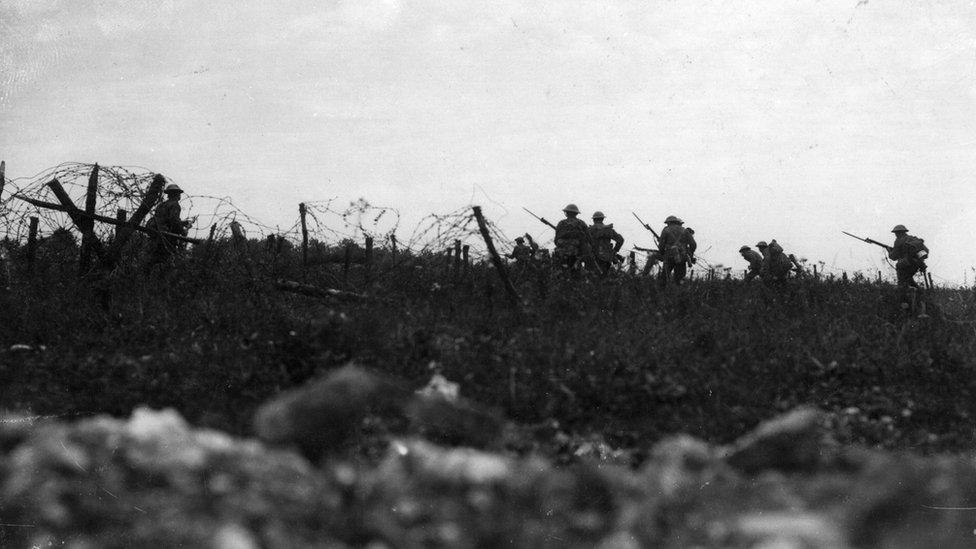The Last Post tribute: A song for a Somme relative
- Published
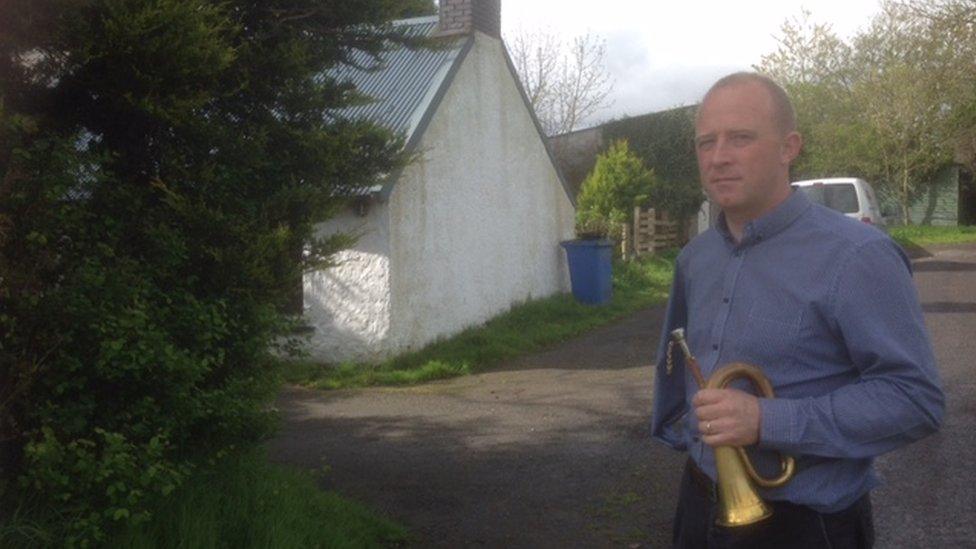
William Sayers outside the house where Samuel lived
The Last Post is played all over the world on Remembrance Day but to hear it float out across the quiet, misty fields of County Tyrone, is quite something.
Across Northern Ireland and France, ceremonies will take place to mark the 100th anniversary of the Battle of the Somme.
Thousands of soldiers from across Ireland were killed at the Somme, including more than 2,000 from the 36th Ulster Division on the first day of the battle.
One man who will be making the journey to the battlefield is William Sayers. His relative, Samuel Sayers, died on the western front a few weeks before the battle began in May 1916.
The eerie and evocative sound of the lone bugler comes from his lips as we stand together outside the rural Donemana home where the private from the Royal Inniskilling Fusiliers lived, 100 years ago.
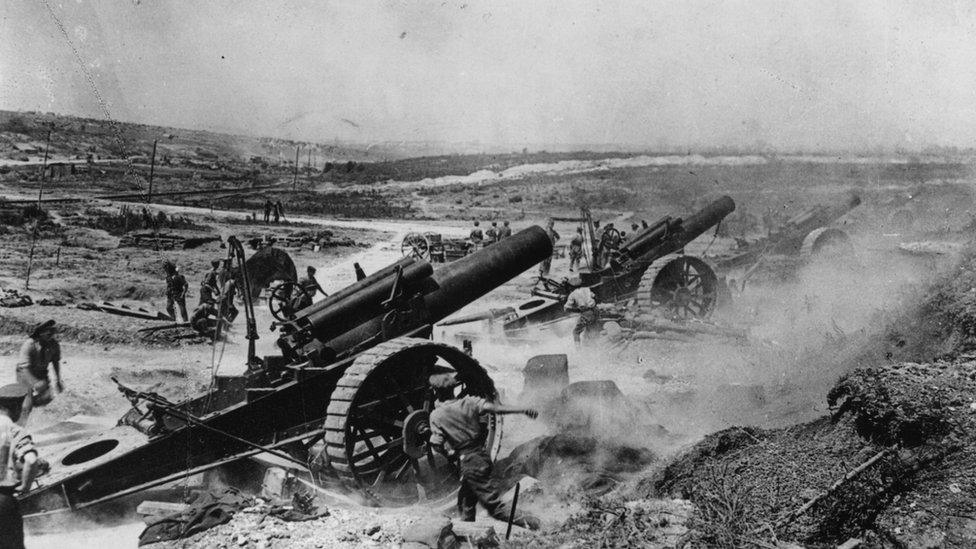
Artillery pounded the German lines for a week in the run up to the start of the Battle of the Somme
"The most synonymous thing is that the field you look onto is actually where he got some of his friends, young farmers in the area, to take up the call and train on," William said.
"He taught them how to crawl on their bellies and to give them some realisation of what they were to expect in the battlefields of the Somme.
"He had a .303 rifle and he got pieces of wood and made a template of the gun and gave them to the men in the field.
"That was so that they would understand the length of the rifle they were using, it was very much forward thinking."
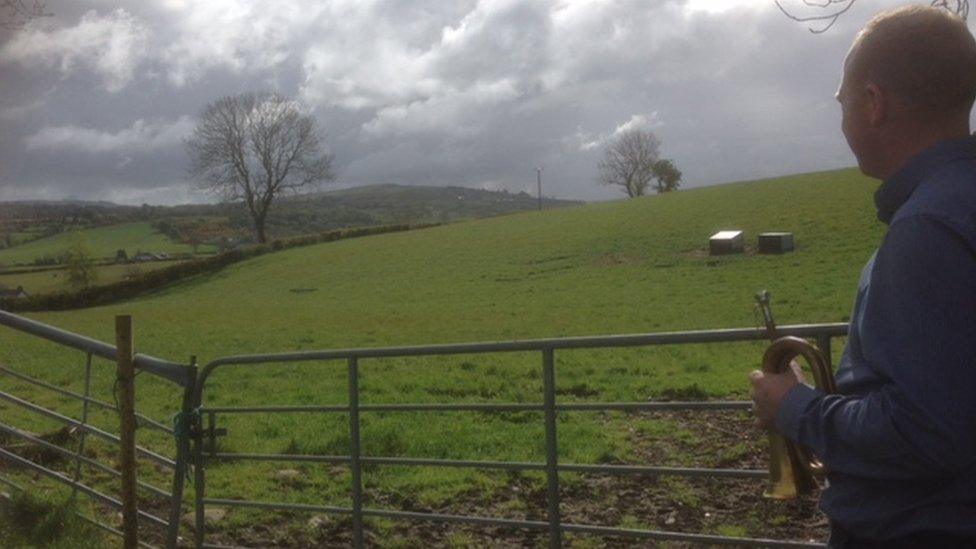
The field beside Samuel Sayers' house where he practiced drilling
William said his distant relative was very ambitious and wanted to succeed in the army and do well in World War One.
"You can imagine that back then food was scarce, money was scarce. They were promised so much.
"They were told that this would be the better lifestyle, they would come back great men and his intention was to come back a captain."
As far as his family know, Samuel went out in 1914 to fight in the war, but returned home for a short period of time.
On his next stint at the front, he was killed on 17 May 1916.
He was buried outside an army field hospital near the Ulster Tower.
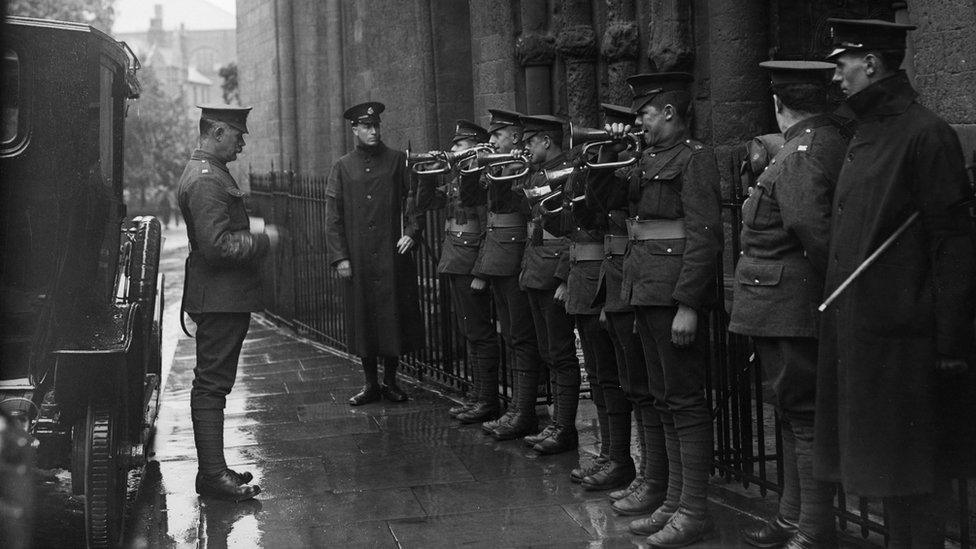
The playing of the Last Post is a significant part of remembrance services
He died as Private Sayers, never making it to his much coveted rank of Captain.
"He was a distant relative but again he was a man from our townland and whether he was a relative or not we're still going to remember him," William said.
"Ten years ago we went out to his grave, the first people ever to visit his grave, and I would just like to leave it that his sacrifice would never be forgotten."
"I tried to imagine myself as the young man Samuel Sayers, leaving here, with the local band marching him to the train station.
"To think that some day you would be in the trenches and the next time you hear a whistle blow over the top it could be all over in a second."
William told me he plans to play the melancholic Last Post over Samuel's grave in a personal tribute to his sacrifice.
"We're going to have an act of remembrance at his grave, my father will put a poppy into his grave and then we'll do the Last Post.
"It's moving in many ways, moving in many ways."
You can hear more about William and Samuel Sayers here., external
- Published30 June 2016
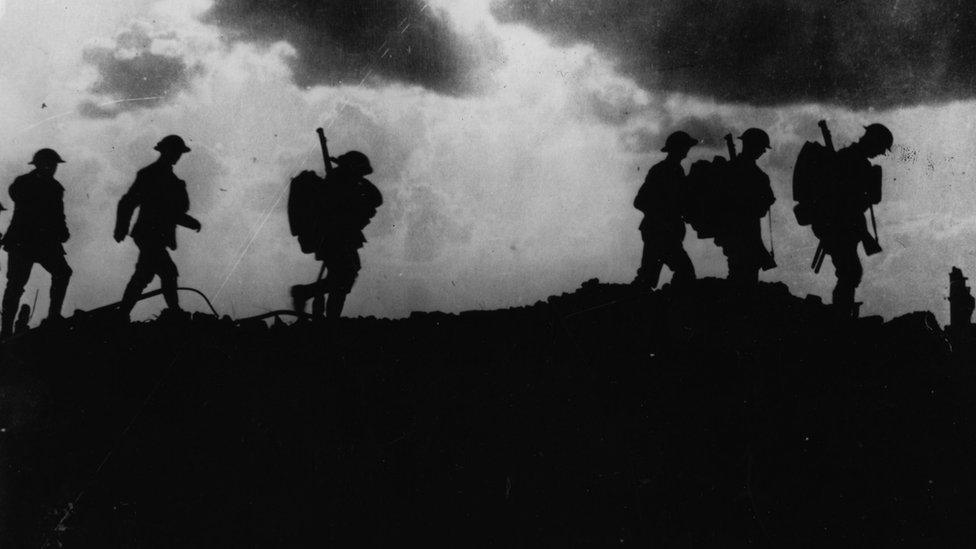
- Published29 June 2016

- Published28 June 2016

- Published17 June 2016
